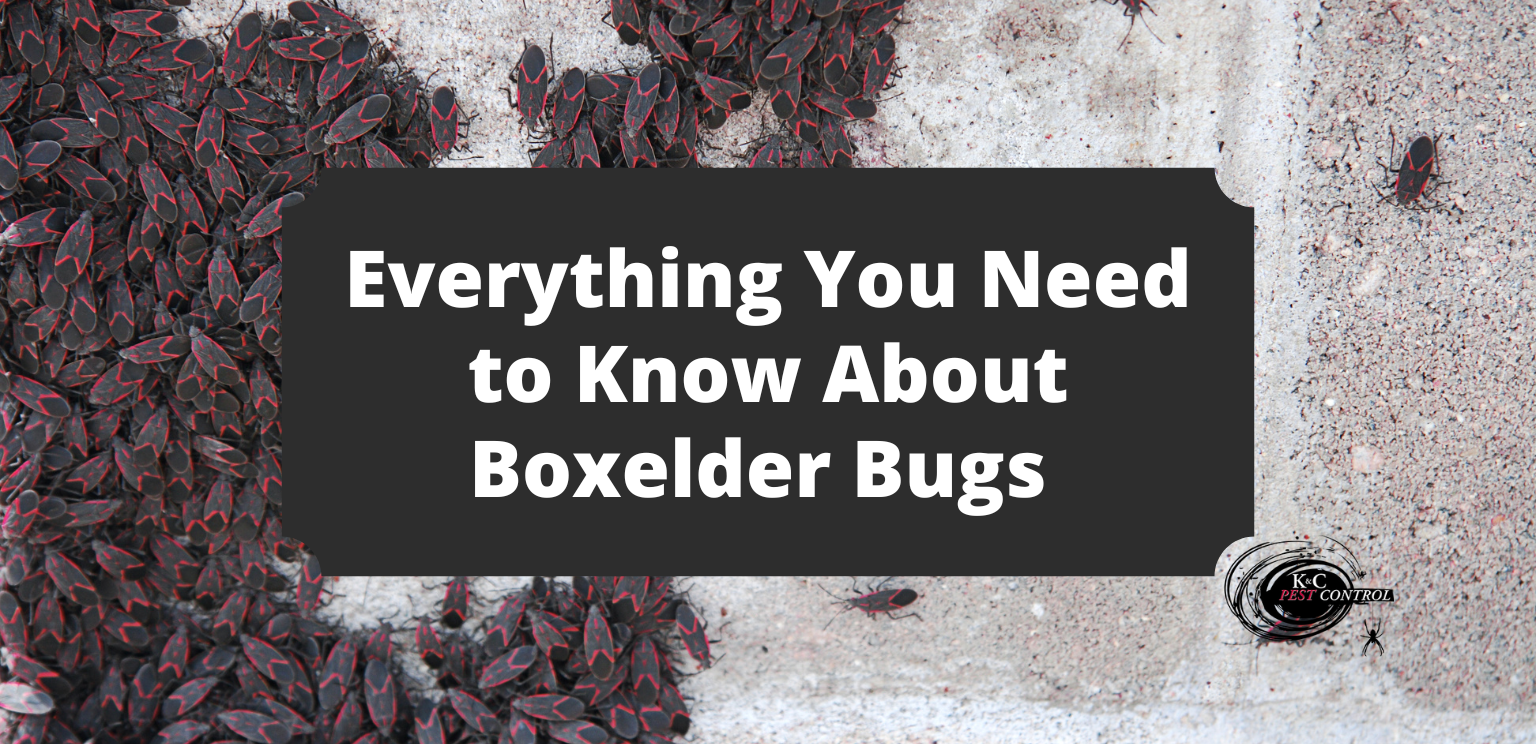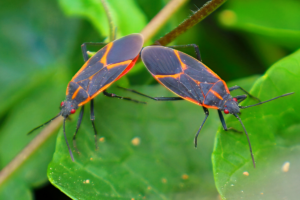Everything You Need to Know About Boxelder Bugs

Boxelder bugs can become a challenge to manage if they find their way into your Wisconsin home. These small pests live in large groups and search for shelter from cold weather, often invading buildings around the Oshkosh-Appleton area in large numbers during the fall and winter.
However, their resilience, ability to hide in concealed locations, and prolonged periods of inactivity during colder months make them difficult to remove. If you’ve spotted these pests or hope to avoid an infestation, here’s what you need to know.
What Are Boxelder Bugs?
Boxelder bugs are small insects commonly found in North America, recognized by their black bodies with distinct red-orange markings. They primarily inhabit boxelder trees and other maple and ash trees, feeding on the tree’s seeds during the warmer months.
As the weather cools, these pests gather in large numbers on buildings, seeking shelter from the cold. While they don’t pose a direct threat to humans or building structures, their tendency to invade homes in search of warmth makes them a nuisance.
What Do Boxelder Bugs Look Like?
Boxelder bugs are easily identified by their small, elongated bodies, typically measuring between 0.5 to 0.75 inches. They have a striking appearance, with black bodies and prominent red-orange markings. These markings form three longitudinal stripes, often found on the pronotum and wings, giving them their distinctive look.
When at rest, their wings fold into a V-shape, showcasing a pattern of red-orange veins. These insects also feature slender, segmented antennae extending forward from their heads and short, typically dark-colored legs.

What is a Boxelder Bug’s Life Span?
The lifespan of a boxelder bug can vary depending on environmental factors and their stage of development. Here’s a general overview of the lifespan of boxelder bugs:
- Egg Stage: Boxelder bugs start their life as eggs, laid in clusters. The egg stage typically lasts about one to two weeks, depending on temperature and other environmental conditions. This usually takes place in the spring.
- Nymph Stage: After hatching from the eggs, boxelder bugs go through five to six nymph stages. Nymphs resemble adult boxelder bugs but are smaller and lack fully developed wings. Each nymph stage involves molting, where the nymph sheds its exoskeleton to grow. This stage can last several weeks to a couple of months.
- Adult Stage: Once a boxelder bug reaches adulthood, it can live for several months. The adult stage typically lasts from late spring or early summer through the fall. During this time, adult boxelder bugs reproduce and feed on seeds, leaves, and sap of host trees.
- Overwintering Stage: As the weather turns colder in the fall, boxelder bugs enter a state of dormancy known as diapause. They seek sheltered locations to hibernate and may remain inactive for several months, from late fall through the winter.

What Do Boxelder Bugs Eat?
Boxelder bugs feed on the seeds, leaves, and sap of boxelder trees — which is how they got their name. However, they are not limited to boxelder trees, also feeding on seeds and foliage of other maple trees, ash trees, and occasionally fruit trees.
These bugs use their mouths to extract plant juices and sap — a significant part of a boxelder bug’s diet during the warmer months.
While boxelder bugs feed on trees and plants, they are not known to cause significant damage to these plants.
How Do Boxelder Bugs Get in the House?
Boxelder bugs can enter houses and buildings in search of shelter, warmth, and protection. They typically start seeking indoor shelter in the fall as temperatures drop. Here are some common ways they access your home:
- Cracks and Gaps: Boxelder bugs are small and can enter homes through tiny openings, cracks, and gaps around windows, doors, siding, and foundations. They can squeeze through small spaces, so even minor openings can provide them with entry points.
- Vents and Chimneys: Boxelder bugs may enter through vents, chimneys, or other openings on the roof or walls of your home.
- Doors and Windows: If doors or windows are left open or have damaged or missing screens, boxelder bugs can easily fly or crawl inside.
- Siding and Exterior Features: They may congregate on the sunny sides of buildings, and from there, some may find their way inside through openings in the walls or siding.
- Plants and Trees: If you have boxelder or other host trees near your home, these bugs may travel from the trees to the house, especially if the trees are touching or close to the building.
- Accidental Entry: Sometimes, boxelder bugs can inadvertently enter your home when carried in on clothing, bags, or other items.
How Do I Deter Boxelder Bugs?
To control boxelder bugs and keep them from getting into your home, consider taking the following precautions:
- Seal cracks and gaps: Inspect your home for any openings and seal them with caulk or weatherstripping.
- Repair damaged screens: Make sure windows and doors have intact screens to keep them out.
- Install door sweeps: Use door sweeps on exterior doors to create a barrier at the bottom.
- Trim vegetation: Keep trees and shrubs trimmed away from the house to reduce the likelihood of bugs accessing your home from plants.
- Use mesh or netting: If you have boxelder trees near your house, consider using mesh or netting to prevent bugs from landing on windows.
- Contact a pest control specialist: If you’ve noticed boxelder bugs, consider consulting a pest control professional for effective removal methods, as these bugs can be difficult to manage once inside.
Why Are Boxelder Bugs Difficult to Manage Once Inside?
Boxelder bugs can be challenging to manage once they’ve entered your home for several reasons:
- Large Numbers: Boxelder bugs tend to gather in large groups. When they enter a building, the significant numbers make it difficult to address the infestation effectively without professional assistance.
- Hidden Locations: These bugs often seek out concealed or hard-to-reach places within your home. They may hide in wall voids, attics, crawlspaces, and other secluded areas, making it challenging to access and treat these locations.
- Resilience: Boxelder bugs can survive in sheltered areas of your home throughout fall and winter, which means they might remain hidden and unaffected by temperature fluctuations.
Due to these factors, effectively managing a boxelder bug infestation inside your home often requires a combination of preventive measures to seal entry points, physical removal methods, and the assistance of a pest control specialist like K&C Pest Control.
Contact the Fox Cities Pest Professionals at K&C Pest Control
Need help removing boxelder bugs from your Fox Cities home? Our experts can assist with current infestations or help you pest-proof your home this fall. If you live in Oshkosh, Appleton, Neenah, Menasha, or the surrounding areas, contact K&C Pest Control today for an inspection, evaluation, and ongoing protection to experience the peace of mind that comes with a protected home.
